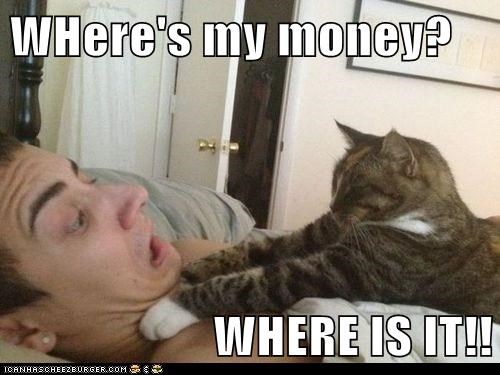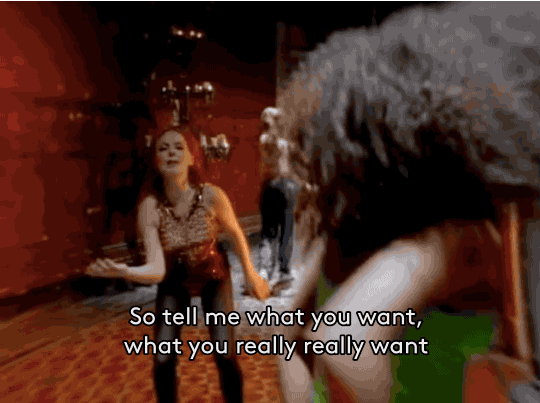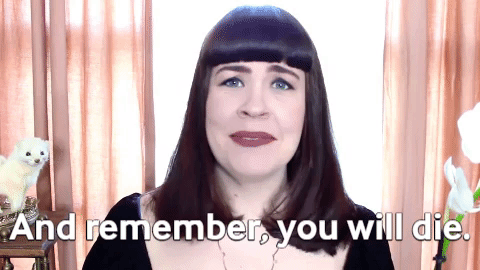Have You Tried Turning it Off and Back On?: Suggestions for the Philadelphia History Museum

Week after week, those of us in the Nonprofit Management course affiliated with the Philly History project read about the nature, operations, and problems of Philadelphia’s cultural sector. We’ve read about their financial know-how but inability to act accordingly. We’ve read about the financial struggle the sector has faced since the big names in Philadelphia philanthropy disappeared in the 1990s. We’ve read about how some, like the Historical Society of Pennsylvania, looked long and hard in the mirror and made decisions regarding their mission and collections.
These readings can paint a pretty bleak picture of the cultural sector if you let that be your focus. However, many of these readings also offer suggestions to remedy these issues. With that in mind, those of us on the Philly History project are tasked, this week, with creating a “transformative pitch” for a history institution. Before I get into that, I want to be clear: the suggestions I offer could potentially be helpful, but I do not know the full reality that this organization faces, and so much of this will be a theoretical exercise. This is, essentially, my way of saying, “I’m not a doctor, and so I am not qualified to give entirely accurate medical information.”
Anyway, the three areas where I have some ideas for ways in which the Philadelphia History Museum could grow or are excelling are in leadership, Financial Management, and programming.
Leadership

Disclaimer: the leader you follow need not be a "him."
I can’t speak to the efficacy of the Philadelphia History Museum’s current leadership, but bringing in new leadership can bring in the necessary fresh vision and objectivity needed at the executive and board levels. I often associate nonprofit executive directors, and more so their boards of directors, with narrow visions and an aversion to taking risks. Taking risks, meanwhile, can be necessary in crafting programming and fundraising to bring in new funders or visitors. Still, bringing in new leadership with such vision ultimately falls on the board which selects them. Perhaps it is time, within the cultural sector generally, to reassess how we bring in new individuals to lead our organizations.
Financial Management

According to the 1999 article, “Getting Back in Shape,” by Paul Connelly and Laura Klein, the Philadelphia History Museum (at that time the Atwater-Kent Museum),
“was faced with the loss of public funding, [and] moved quickly to reassess its role in the community. It launched an aggressive membership campaign, set up a school outreach program and transformed itself from a repository of artifacts into a true cultural resource. Its efforts resulted in attracting new private sector support. A less flexible and motivated institution might well have been forced to close its doors.”
That being said, this quick thinking and reassessment in their fundraising has not brought the kind of prosperity, nor even the kind of stability, that to which the Philadelphia History Museum aspires. Based on the possible remedies provided in the Connelly and Klein text, I would propose that they instead examine closely how they manage their finances. One solution could be implementing new fee-based services or other ventures which could bring in new revenue. However, Connelly and Klein advise that this, much like altering one’s mode of fundraising, are ironically best done when the worst appears to be over, and the organization can see a clearer way forward. With that in mind, let’s examine one more field in which the Philadelphia History Museum could recover.
Programming

...in terms of programming...
Connelly and Klein assert that for most nonprofits, it is safe to assume they will need to develop new programs or even eliminate existing ones. An effective way of gauging which programs stay and which go is by assessing market need. What is the public demanding and what would be an effective program to contribute in this current period? The Philadelphia History Museum has often failed as an everyday Philadelphia history institution to plug into current events and connect that present to a relevant past. Perhaps an investment here with new programs would benefit them. Simultaneously, to create these new programs, Connelly and Klein also argue that organizations should consider who their essential staff are based on these programs needs regarding skills and organization.

In the end, I think there is an additional point for cultural nonprofits to consider that I don’t think has been given enough attention. My personal philosophy (and so you are free to disagree with me) is that everything comes to the end of its life at some point. Everything dies. Nonprofits, one would hope, often outlive those who create them and continue to operate, and hopefully prosper, indefinitely into the future. Nevertheless, there may come a time when a nonprofit, not matter how hard they try and how many new ideas they invest in, stagnate. Something I would like to examine in weeks to come is how nonprofits can gracefully and safely bow out of the cultural sector. @jfeagan has talked about the possibility of funding the Philadelphia History Museum in an effort to merge with Temple University and take on a new identity, leaving its old life as the Philadelphia History Museum, and before that, as the Atwater-Kent Museum. For an institution in the twilight of its life, what options could we create to ease the pain that often comes with the metaphorical death of a nonprofit?
100% of the SBD rewards from this #explore1918 post will support the Philadelphia History initiative @phillyhistory. This crypto-experiment is part of a graduate course at Temple University's Center for Public History and is exploring history and empowering education to endow meaning. To learn more click here.
Sources:
"Getting Beyond Breakeven: A Review of Capitalization Needs and Challenges of Philadelphia-Area Arts and Culture Organizations," Commissioned by The Pew Charitable Trusts and the William Penn Foundation, (TDC, 2009).
"Capitalization, Scale, and Investment: Does Growth Equal Gain? A Study of Philadelphia’s Arts and Culture Sector, 2007 to 2011," (TDC, 2014).
Peter Dobrin, “Philadelphia's culture boom strains under the costs of upkeep; for Phila. Arts, a shifting donor base; A new field of donors; The Philanthropic Firmament,” The Philadelphia Inquirer, September 22, 2013 – November 3, 2013.
Stephen A. Greyser and Stephanie Woerner, "The Historical Society of Pennsylvania," Harvard Business School case study, November 20, 1996, revised February 5, 1997.
Paul Connelly and Laura Klein, "Getting Back in Shape: Guidelines for Improving the Fitness of Established Nonprofit Organizations," (The Conservation Company, 1999)
Joy Feagan, "Letter of Intent (LOI) For Moving the Philadelphia History Museum to Temple University," February 28, 2018.
Credit is also due to @charliehersh for their .gif suggestions!
Gif game is strong, Derek! I'm also curious about the current PHM's leadership. It'd be interesting to know their history with the organization and professional background. Like we read last week about HSP, perhaps they need an individual with administrative management experience. Or maybe someone more familiar with the history/culture aspect.
The PHM is already charging lots of fees. It cost me $40 to use pictures that I took of their muskets in my research. At some point increasing fees reduces demand so much that it actually hurts overall revenue. Perhaps if they increased access to their collections they could build a bigger public presence and draw in more visitors and more funders.
Good steem dduquette.
I gived you a resteem.
Please have a look over this post: https://stееmit.com/@qkr1066/hbqsd-feat and give me you feedback!I really want to know what do you think about the article!
Thanks dduquette!
A complication in planning the demise of history-oriented orgs is that many (if not all) are also stewards of collections and historic structures. However leadership and programming might wind down, pending demise (ironically) forces an increase in activity and capacity at just the wrong moment in the life of the org.
Any ideas on how to prevent or mediate that dilemma?
I imagine that its unavoidable to fend off visitors/vultures who nostalgically visit a dying institution.
To mediate it and perhaps even benefit from it, I think a concise and open plan of visitor communication is necessary, ie what will happen to our collections? Where can you still visit them? What would you like to see done with them? If visitors didn't connect with the collections in this life, they will connect with them in the next, and maybe this funereal visit will inspire them to seek out other cultural history institutions to support and connect with while they still live!
Side note: If the PHM ever does merge its collections with Temple University, I personally think it would further stifle the life of those collections and the city's history unless marketed and exhibited properly--so unless Temple engages with and entrusts power to the community. Skills they're not known for.